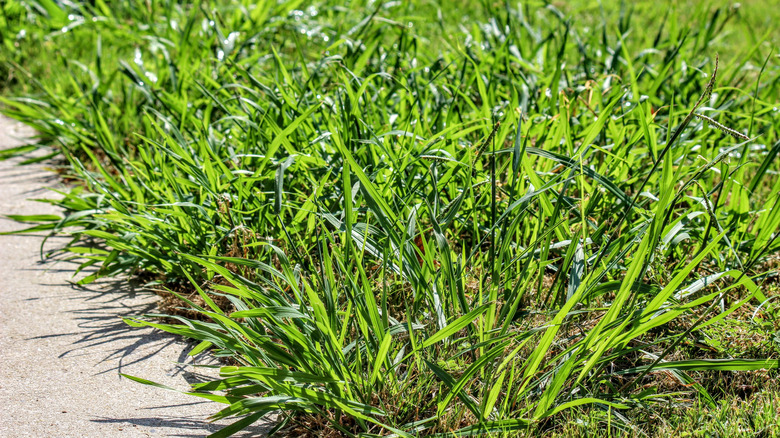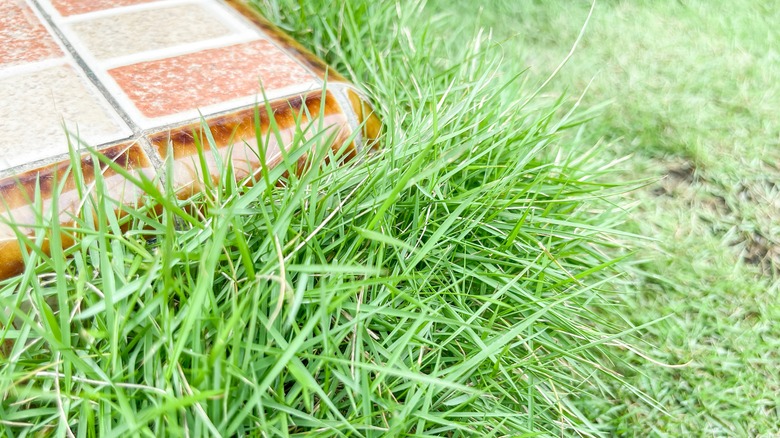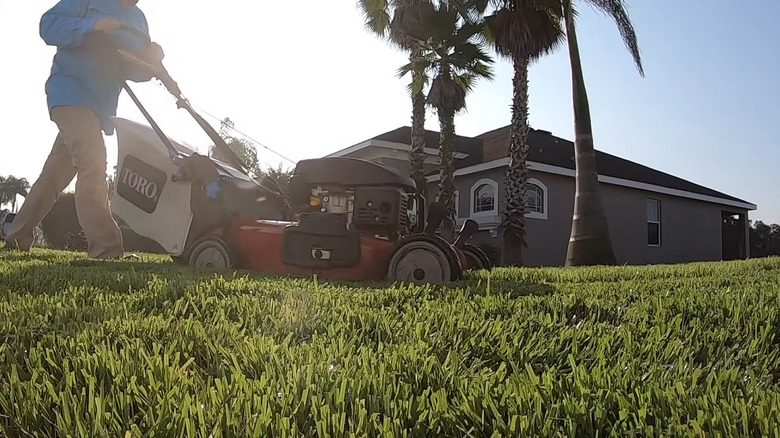This Grass Can Choke Out Pesky Summer Weeds Like Crabgrass
Rearing their ugly, hairy, sickly light green heads during summer, crabgrasses (Digitaria sanguinalis) are an invasive weed that won't let homeowners enjoy beautifully lush, manicured lawns. They return yearly despite dying from frost. They eventually outcompetin the turf, adding to the gardener's remorse. Not anymore, though! You can choke out these prolific seed-spreaders for good by sodding zoysiagrass (Zoysia spp.) in your lawn.
Zoysia, an Asian native, is a warm-season, perennial grass. Thanks to its spiky yet smooth green blades and white inflorescence, it looks spectacular and well-cushioned in sunny yards of zones 5a to 11a. This is one of the best grasses that can handle extreme heat, drought, heat, humidity, and foot traffic while requiring less irrigation, mowing, and fewer fertilization sessions after establishing itself. However, the best part about this multi-stemmed grass is its intolerance of summer weeds like crabgrass and pre-established turf like St. Augustine and Bermuda grass. Its creeping habit, although slow to cover ground, is dense enough to crowd out all uninvited guests. However, when left unchecked and unmowed, it can colonize surrounding desirable vegetation, causing trouble.
Zoysiagrass outcompetes summer weeds
The best trick in the gardening playbook to control weeds like crabgrass is maintaining a healthy, dense patch of turf. Zoysiagrass achieves precisely that. Since it produces both rhizomes (creeping rootstalks) and stolons (aboveground runners) that spread horizontally, zoysiagrass puts on lateral growth, growing an impenetrable mat that smothers weeds. Although you can cajole it into growing taller — and shading out any pesky invaders — through fertilization, avoid it in early spring because late-season frost can cause grass injury, preventing greening. Similarly, late fall fertilization can delay hardening, affecting the next season's growth and making the turf susceptible to large patch disease, which can be challenging to treat in your lawn.
So, its fertilization must be split into smaller, more frequent intervals, and the grass should be fed only when it shows signs of slowing. That way, the grass remains green without allowing crabgrass to benefit from summer fertilization. While zoysiagrass tolerates light shade, grow it in full sun (at least 6 to 8 hours of direct light) for thick growth to keep weeds out. Use its deep-rooted system and propensity to curl up at the first signs of drought to your advantage. Stick to a few need-based, deep-soaking sessions, allowing the turf to dry completely in between. This means adding no more than ¾ to 1 inch of water (depending on rain) in any sitting to impede weeds' access to resources without harming the drought-tolerant grass.
Establishing and mowing zoysiagrass
Despite zoysia getting a bad rep for invading the neighbor's territory, it's actually a slow-spreader. It takes three to five years to establish itself on an existing lawn when left to its devices. In new yards, it requires at least a year for one plug to be planted per square foot; albeit the timeline gets shorter with greater sun exposure (and vice versa). That's why most homeowners default to sodding the zoysiagrass in their yards to achieve weed-free landscapes. Better yet, you won't have to deal with soil preparation and emerging weeds since, unlike established zoysia, their plugs and sprigs risk being outcompeted, defeating the purpose of installing the grass.
But if sods overshoot your budget, plant the plugs and apply a pre-emergent herbicide. Remember, the closer the plugs are spaced, the quicker they spread. Maintaining 6 to 12 inches of spacing can cause them to gain an inch or two across the lawn monthly. Once fully established, zoysiagrass will eliminate most summer weeds except wild garlic or invasive broadleaf. Use a rotary mower the right way to mow if you don't want weeds to take over every week, maintaining a height of 1 to 2 inches. Also, ensure the grass isn't waterlogged, diseased, or accumulating any thatch to prevent the weeds from having a fighting chance. Winter weeds like henbit and chickweed may pose trouble during dormancy.


